
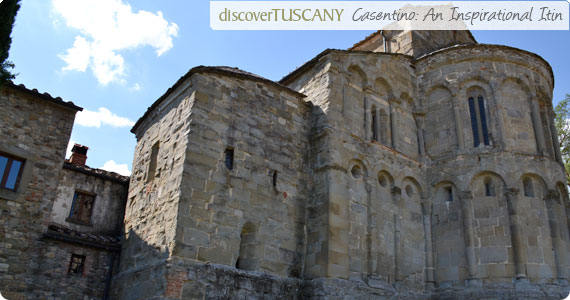
Tuscany » Destinations » Casentino »
A Trip into the Past
Would you like to discover a piece of Tuscany that you will forever carry in your heart?
One that is deep in tradition, natural beauty and tranquility? One which is only 35 km southeast of Florence, where you can start an adventure that will show you a side of Tuscany that goes beyond its vineyards, museums and leaning towers?
Then head to the Casentino Valley! A return to simple values, country living. A visit to an area which holds a historical importance that is often forgotten when talking about the great monuments and their benefactors in Florence.
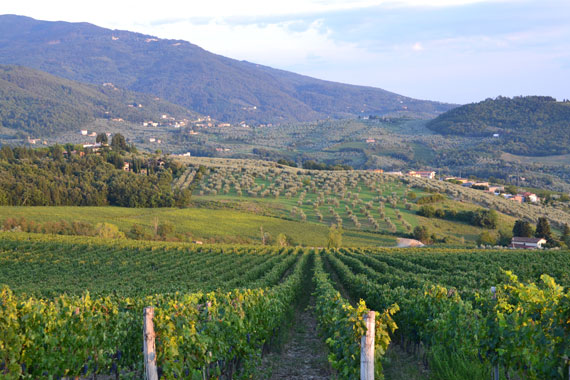
Heading outside of Florence towards the Passo della Consuma (the Consuma Pass), you will traverse a land rich in vineyards and olive and fruit groves. To embark on this journey, you will slowly climb the Apennines, peak at 1050 meters above sea level in a small town called Consuma, cross the border from Florence to Arezzo and then slowly wind your way down into the Casentino Valley. A quick stop in Consuma, which straddles two provinces and closely resembles a mountain baita will give you an opportunity to stretch your legs and refurnish your stomach. As we would say in Italy, time for the Italian “seconda colazione” (second breakfast).
The Time is Always Right for Focaccia
A stop at any one of the bars at the Consuma will introduce you to the hearty mountain breakfasts that this area prefers, in particular Bar Consuma with its freshly baked schiacciata (sometimes called focaccia) filled with porcini mushrooms, prosciutto and fontina or simply plain with a drizzle of olive oil and a sprinkling of crispy salt flakes. And here, I would suggest you consider the idea of planning a picnic. This is the perfect place to stock on picnic provisions for later in the day.
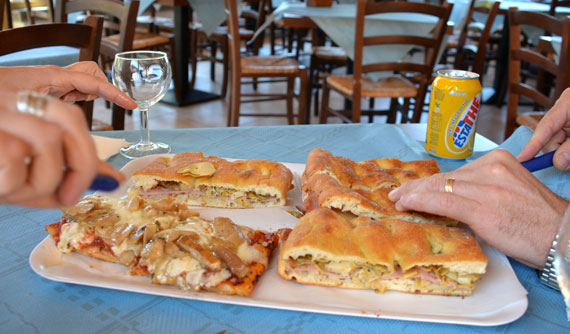
As you proceed further into the valley, the SS 70 will slowly begin to wind its way down the mountains, passing through a panoramic scenery of rolling hills dotted with farmland, cows and the occasional deer. The first town you will encounter is Pratovecchio but, before you venture into this quaint little hamlet, detour for Castello di Romena and the Pieve di San Pietro a Romena. A brown and white sign will send you in that direction if you haven’t already seen the distinctive silhouette through the trees.
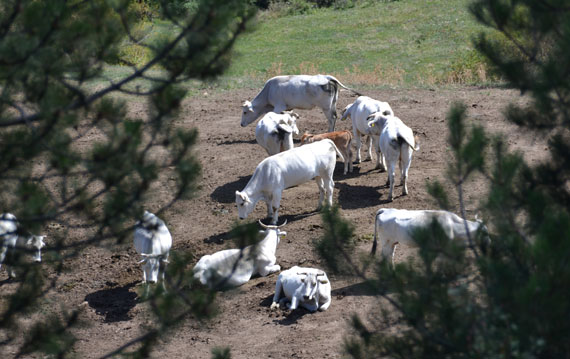
The Skyline of Casentino's Castles
Once you have walked around and explored the castle, you can either hike down to the parish church (pieve in Italian) or drive the km and a half. There is ample parking. The church is not always open to the public but you can inquire at the buildings in front of it for more information for a visit. Now considered a National Monument, and the actual home for the Fraternità di Romena which hosts many spiritual events, the Pieve di Romena dates back to the VIII century. Though it has suffered two major restructurings after a mudslide in 1678 and an earthquake in 1729, the basic beauty of the church has not been changed. Especially noteworthy are the capitals on the columns inside the church which are believed to be from Lombard artisans in the 1100’s and the abside, with the varying rows of columns.
Step Back into Time with these Small Towns
Proceed down into the town of Pratovecchio which offers two spacious and special squares. The newer of the two is named after Paolo Uccello, an important Florentine artist from the 1400’s whose family came from Pratovecchio. It is a circular piazza with a fountain in the center and a small park for children. The other main square can be explored by walking down via Giuseppe Garibaldi and the “portico” or covered arcades which characterizes this small town. Enter from any one of the little roads on the left hand side and you will find Piazza Jacopo Landino, named after another important artist from the 1300’s. Many times referred to as the Old Square (Piazza Vecchia), it is the home to the headquarters for the National Park for Casentino and a lovely church from the 1500’s called SS Nome di Gesù.
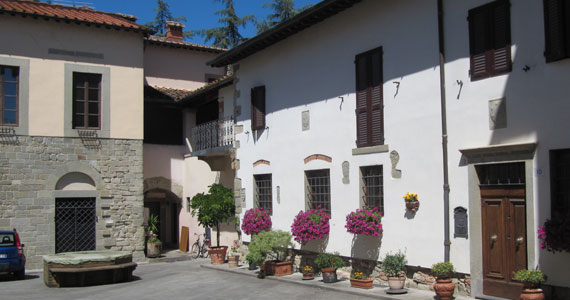
After a visit to Pratovecchio one can proceed to Stia, only a few kilometers up the road. You could even walk there (only 2.5km). Often referred to as the source of the Arno River which flows through Florence, Stia was actually founded as the market town to the Castello di Porciano, located a short distance up the hill. The actual source of the Arno is located on Mount Falterona and is just one of the many walking excursions one can take from this area.
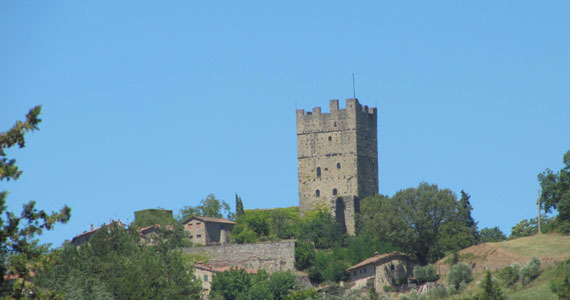
The Art of Wool in Stia
If you opted to drive, park your car in the lot located in front of the bridge over the Staggia river - which meets up with the Arno right here in Stia. This little town has a very unique and picturesque main square in the form of a triangle. Noteworthy are the arcades that line both sides of Piazza Tanucci, the church Santa Maria della Assunta and the water well with its ornate metal work at the tip of the triangle. The columns in the church are very similar in style and quality to those in Romena, which corresponds with dates of the building. Wool was a major player in the economic well-being of this valley and the Eco-Museum for Wool is worth a visit as it was the largest wool mill in Stia, at one time employing over 500 persons and producing approximately 700.000 meters of cloth a year.
Stia still produces its "panno casentino" which is a fuzzy wool cloth: you will find shops around town where you can buy winter coats made in the quite particular cloth, orange and red being the most popular colors, to take home as a special Italian souvenir.
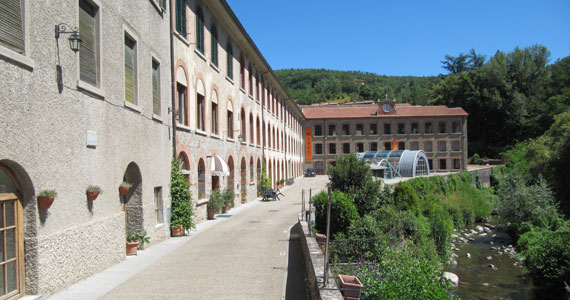
Take a few minutes to visit Palagio Fiorentino, located over a small bridge above the wool mill. Here you will find a modern architecture covering which houses the 10 faucet for the fresh spring water that is found in Stia - bring a bottle and fill it up---some of the sweetest water you will ever taste, crisp cool and naturally clean (a great addition to your picnic!)

Picnic at Camaldoli
Backtracking to Pratovecchio, you can follow the signs for the Camaldoli Hermitage, run by of a branch of monks from the San Benedictine order. Founded by Saint Romuald in the early 1000’s, the Hermitage and Monastery created a commanding point of reference for not only the Guidi family who ruled this area but also the people who worked the land...the plebs. The road into the National Forest, which leads to the Hermitage is a mix of asphalt and dirt road - but easy to navigate. There are many little alcoves and “sentieri” or trails to stop and visit along the way...and a perfect area to stop for a picnic.
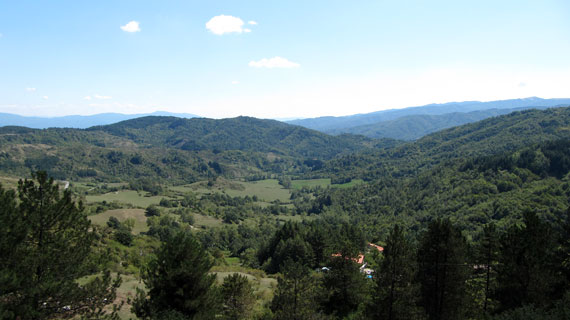
Upon arriving at the hermitage (which also has an ideal picnic area), you will find a small but functional community. It is possible to visit the cells of the monks, the church and a little gift shop which offers products typical of the Camaldoli production. Especially herb teas, liquors made from homegrown plants and honey ranging from a very light amber color to almost black, from the pine trees, which make perfect gifts.
Caring for Nature
The creed of the monks was to study, work and pray. They studied the scriptures, they prayed and meditate for hours and their work centered around the care of the forest. Famous for their gardens which grew plants from all over the world, the monks were well noted for their medical cures, elixirs and healthy teas. But perhaps their most lasting contribution to the valley, Italy and even Europe was the first “Code of the Forest”, an integral part of their monastic rules. The Code was written in a large part as an extension of their spiritual beliefs, protecting and giving back to the Creator within the forests. The National Forest of Casentino covers over 35.370 hectares which include the work that the monks at Camaldoli started in the year 1027...just a little shy of 1000 years ago! Within these boundaries, you can find some of the oldest and largest trees in Italy - some dating back as much as 400 years.
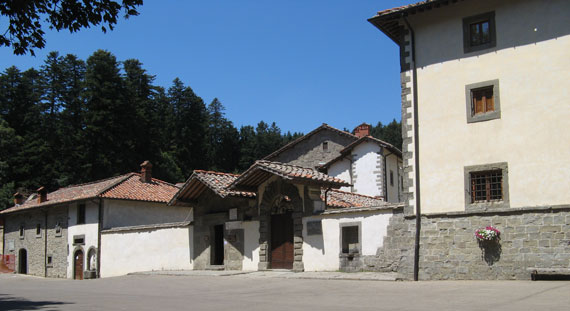
As you drive down from the Hermitage you will encounter the Monastery - a less stringent branch of the monks who have a well known pharmacy where they sell art, chocolate, candies and other recipes taken from their long tradition.
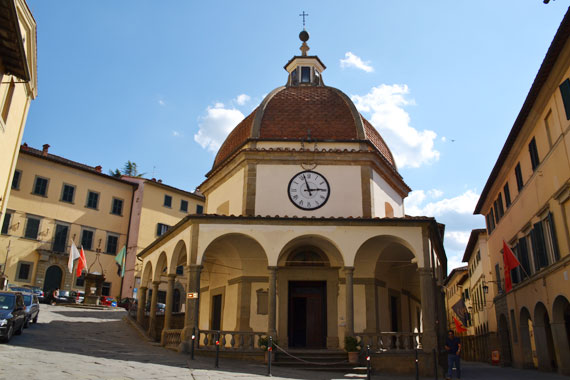
The drive to “fondo” valley, to the bottom of the valley, will take you directly to the town of Poppi. This picturesque hilltop hamlet is definitely worth a visit, starting with a walk around the walls and the several churches that populate the town. The main square is rather small in comparison to Stia and Pratovecchio, but that is not necessarily an indication that this was a town that was less busy.
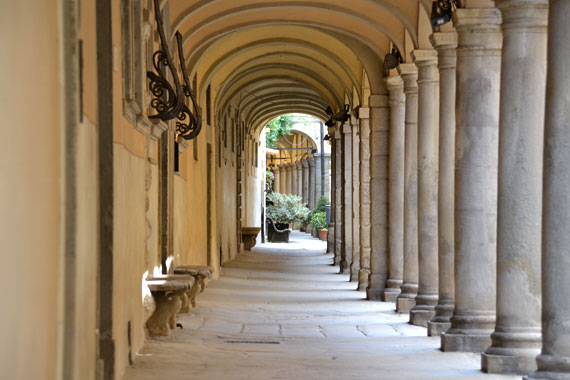
A Jewel Not to be Missed
Nominated as one of the first “Più Belle Borghi” in Italy (Prettiest Little Towns), the architecture within the walls of Poppi has been carefully maintained to give you the sensation of walking through the town almost as it would have appeared in the early 1300’s. There is the the Oratory of Madonna del Morbo, an excellent example of late Baroque architecture built in the 1600’s to thank the Blessed Mother from saving the town from the plague. Badia San Fedele is actually older than the castle with several important pieces of artwork and a crypt with the remains of San Torello, the patron saint of Poppi.
You can walk all around the outside of the church and complex, which at one time included even a theater but now serves as the local high school, and enjoy great views of the valley. Don’t forget to climb to the top of the hill to visit the Castello di Poppi built in the late 1200's and the adjoining Park Pratello. This castle, designed by the same architect who built Palazzo Vecchio in Florence, Arnolfo di Cambio, has been inhabited since its origin and houses an important historic library with manuscripts as old and older than the castle itself.
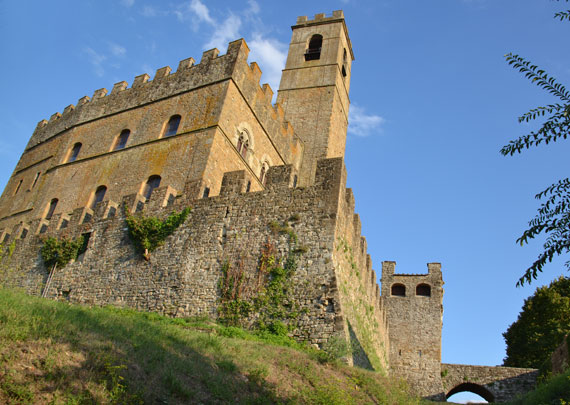
Fill up Before Heading Home
Last stop before going home: if your picnic lunch just didn’t fill you up, the square in Ponte a Poppi has a great little place called Il Mattarello (the rolling pin used for the pasta)… stop by and sit outside and indulge in a plate of homemade pasta: ravioli (pasta filled with spinach and ricotta cheese) or tortelli (potato filled pasta). Then hop over to the corner bar where you can get a gelato… all while gazing upon the magnificent Poppi skyline and castle.
About Donna Scharnagl
It has been over 22 years since I took my first steps in Italy and I still haven’t found a good reason to leave. Between the food, the culture, the history, the art, the landscapes … did I mention the food? I have become a lifelong student. And I soon learned that Italians all have stories that long to be told; stories that paint a picture of how hard work produces character, how life is made of ups and downs and how good it feels to laugh.
You might also like:
Did you find this article interesting? Share it!
Questions? The right place to ask is our Forum!
(questions posted on Comments below will no longer receive replies: so post on our Forum!)









